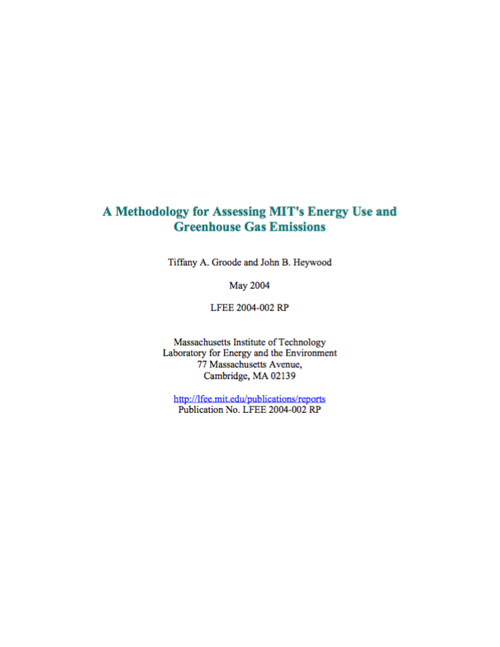This MIT campus emission assessment has been written in response to the City of Cambridge Climate Protection Plan, which calls for a 20% decrease in greenhouse gas emissions from 1990 levels by the year 2010. This greenhouse gas inventory includes all emissions of carbon dioxide, methane, and nitrous oxide due to utility use from fiscal years 1990 to 2003, as well as estimates of transportation and solid waste emissions. It accounts for utilities purchased and utilities produced from the MIT Cogeneration Power Plant. A methodology has been developed to allocate MIT utility plant emissions based on produced electricity, steam, and chilled water. This allows facilities to develop programs that will directly impact the source of highest emissions. In addition, the assessment includes carbon dioxide emissions due to the MIT commuting population from fiscal years 1999 to 2003, and accounts for equivalent carbon dioxide emissions from campus solid waste incineration from fiscal years 2000 to 2003. The 20% reduction target from 1990 emission levels sets a cap on campus emissions of 161,150 equivalent metric tons of carbon dioxide per year. At current levels, a 22% decrease in emissions would be required to achieve this target. Emissions released from utility use account for 90% of the campus emissions, with 9.5% attributed to commuters, and 0.5% due to campus solid waste. Therefore, reducing the amount of emissions caused by utility production and purchasing would have the largest effect on reducing the total campus greenhouse gas emission rate.
A thermodynamic availability flow analysis has also been conducted on the gas turbine and heat recovery steam generator system of the MIT cogeneration power plant. Availability losses within the system were targeted, and therefore appropriate actions can be made to decrease losses and increase component and plant efficiencies. As production efficiencies are maximized, fuel use, and thus emissions are minimized. From fiscal years 1998 to 2003, the gas turbine efficiency, based on the higher heating value, remained approximately constant at 24%. The heat recovery steam generator effectiveness has decreased 11% from 42% to 37%. It has been shown that the decrease in the heat recovery steam generators performance can be attributed to fouling effects on the heat transfer surfaces between the hot exhaust gases and the water stream.
An accurate inventory of MITs greenhouse gas emissions is a necessary first step in reducing campus emissions. This assessment targets emissions generated by the utility, transportation, and solid waste sectors, and identifies areas with the greatest potential for reducing campus emissions. This inventory will also continue to allow MIT to evaluate its greenhouse gas emission trends and establish goals that will contribute to the emission reduction target set by the city of Cambridge.
MITEI Author
 John Heywood
Professor Emeritus
John Heywood
Professor Emeritus
Department of Mechanical Engineering
